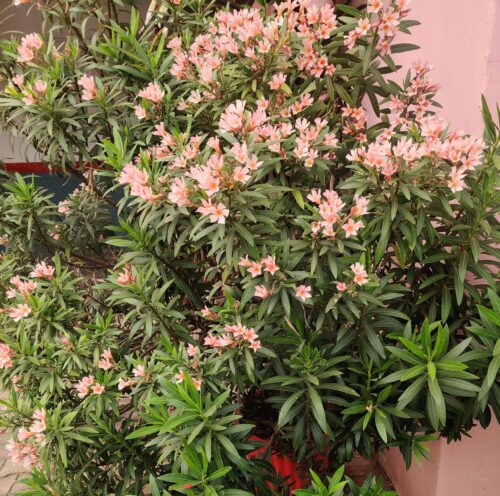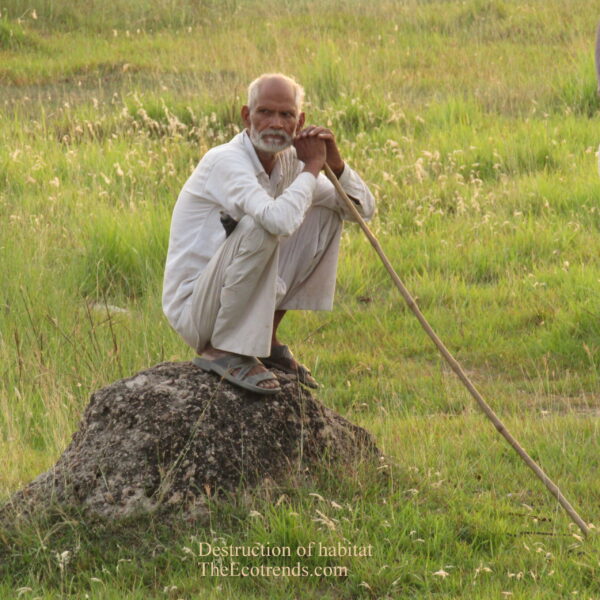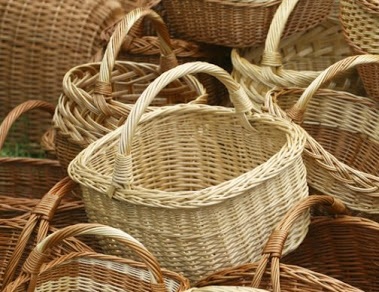Living organisms capable of synthesizing food on their own are called as plants. They contain chlorophyll, the green magnesium compound which helps in trapping the energy from sun. This energy runs the process of photosynthesis through which glucose is basically synthesized in leaves and green stems on combining together the atmospheric carbon dioxide and water.
Oxygen is released in this process which joins atmospheric gases after escaping out through stomata, the small pores found on leaf surfaces. The source of oxygen liberated out during photosynthesis is water which is broken down into hydrogen and oxygen inside leaves.
Germination and Growth
Plants develop through germination of seeds under favourable conditions of temperature and humidity. The process of germination is catalyzed by an enzyme which breaks the dormancy of seeds and activates cell division. As a result radicles and plumules come out.
Radicle grows away from light and enters into soil to absorb water and nutrients. It develops into roots- in a system called as root system. The plumule grows into stem which bears leaves, buds, branches, flowers and fruits. Fruits contain seeds that germinate under favourable conditions to give birth to new plants.
Parts of a plant and their functions
There are five basic parts of a plant- leaves, stems, roots, fruits, flowers.
Leaves
These act as food-factories of plants. They are green because they contain chlorophyll which is the basic chemical compound to absorb solar energy and help in photosynthesis. This is contained inside chloroplast.
Leaves have small openings on their surfaces and these openings are called as stomata.
Stomata help in the exchange of gases and release of water vapour from leaves. The process of food synthesis by plant leaves is called as photosynthesis.
Carbon dioxide is essential for photosynthesis and it enters into leaves through stomata. This process essentially takes place in the presence of sunlight, chlorophyll, carbon dioxide and water. Plant roots absorb water and send it through xylem tissues to different parts of plants including leaves.
It is during the process of photosynthesis that water is decomposed into hydrogen and oxygen. The oxygen is released into the atmosphere through stomata and the hydrogen thus obtained combines with carbon dioxide to form starch. It is the basic food which is transferred to different parts of a plant through phloem tissues. The extra food of plants is stored in different parts of the plant.
Leaves of different types of plants are different from each other. There are vast differences among shapes, sizes, colours of leaves.
Leaves of dicotyledonous plants have petioles while those of monocotyledonous plants do not have petioles. Petioles are basic structures that link leaves to stems. It is through petioles that water and food supply between leaves and stems take place.
Besides acting as food factories of plants leaves perform many different functions like storage of food, transpiration, and asexual reproduction. Leaves of Bryophyllum take part in vegetative propagation through leaf buds.
Roots
These act as straws absorbing water and minerals from the soil. Tiny root hairs come out of the root, helping in the absorption. Roots also store extra food for future use. The principal functions of roots are to absorb nutrients and moisture, to anchor the plant in the soil, to furnish physical support for the stem, and to serve as food storage organs. In some plants, they act as organs of vegetative propagation as well.
Stem
Structure that supports buds and leaves and serves as a conduit for water, minerals, and sugars is called as stem. The three major internal parts of a stem are the xylem, phloem, and cambium. The xylem and phloem are the major components of a plant’s vascular system. Some photosynthesis takes place in the stem, but most takes place in the leaves.
Stems of different types of plants are different in terms of shape, thickness, strength, colour and functions. Stems do many things. They support the plant. They act like the plant’s plumbing system, conducting water and nutrients from the roots and food in the form of glucose from the leaves to other plant parts. Stems can be herbaceous like the bendable stem of a daisy or woody like the trunk of an oak tree.
Some stems go underground and store food. Potato is one such example. Underground stems too are different from one type of plant and the other. However, many types of stems have been found to take part in vegetative propagation. Sugarcane stem is one such example.
Flowers
A flower is a modified shoot which performs the function of Sexual reproduction as it contains sex organs. The parts of a flower are sepals, petals, pistil (stigma, style, and ovary), and stamen (anther and filament).These are not considered as parts of the plant, but parts of a flower. Sex organs of a plant are Anther and Gynoecium. Anthers bear pollen sacs that contain pollen grains, the principal male sex units. The Gynoecium also called as pistil has ovary as its basic part. Fertilization that is fusion of male and female sex units take place inside ovary. After fertilization, ovary turns into a fruit. Flower may either be unisexual which contains any one sex organ and bi-sexual which contains both the sex organs.
Flowers of different flowering plants are coloured variously. The basic truth behind colouration of flowers is to attract agencies of pollination like insects, bats, and even human beings to help in pollination.
Fruit
A fruit is defined as a ripened ovary, and consists of the fertilized and mature ovules called seeds and the ovary wall. Seeds are part of the fruit, but are sometimes considered a plant part in their own right. The seed consists of an embryo (a miniature plant in an arrested state of development), the endosperm (a built-in food supply made up of proteins, carbohydrates, or fats), and the seed coat (protects the seed from disease and insects and prevents water from entering the seed).





hi